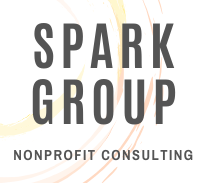Engaging your Communities in Your Strategic Planning Process
As a non-profit organization that works to alleviate systemic issues in a community, it is essential for you to have regular touchpoints with people in the community. Your strategic planning process is one way to check in with the community. In addition, you can incorporate Human-Centered Design steps to engage your community in your strategic planning process.
The first step in the Human-Centered Design process is empathy. Going into the strategic planning session, you have to understand your community, and you can do that by practicing empathy. One way to practice empathy is by going to the community and joining the community members in their daily work and tasks. There are many ways of getting to know the people in your community. Volunteer at other organizations in your community. Work at a local grocery store or corner store. Have a booth at the local farmer’s market or festival. Get to know the people and learn their stories. Conduct informal interviews with the people you encounter or have them fill out a survey. Make notes of all your observations, discussions, and surveys, keeping confidentiality at the forefront. Those notes will help you in the next step of the strategic planning process.
The second step in the Human-Centered Design process is to define. You define the issue or problem you want to solve. In the strategic planning process, you define strategic directions, outcomes, goals, and your vision for the organization. You can seek input from your community members in all of these areas. You can create an adversary board that goes through all the notes you collected while you were out in the community and helps set your strategic priorities. Another way to engage your community in this step is to have town hall meetings and ask the community to help narrow down the priorities. You want to ensure that your organization's priorities align with the community’s priorities.
The third step in Human-Centered Design is to ideate. In this step of your strategic planning process, you can find creative ways to engage your community. In this step, you will brainstorm ideas for accomplishing your priorities and meeting your goals. You can devise different ways to engage your community in this ideation step. One fun way is to create a contest. Ask for the community's ideas through an art or essay contest. Another fun idea is to have a festival of ideas where you invite community members to come and share all their ideas, even big, far-fetched, or fanciful ideas. You can also have community members engaged in narrowing down all the ideas to a few new programs or a few tasks for each priority.
At this moment, you have gone through your basic strategic planning process. You have collected your data, you set your vision, goals, and priorities, and you have come up with new programs or tasks to accomplish the vision you set. You can prototype your programs if you want to go one step further. For example, when Lego was creating the Lego House in Denmark, they did a series of events with families to prototype the different exhibits they would have in the play house. They found out that some exhibits and activities were more popular than others, and they discovered some exhibits were duds. You can prototype your programs by creating pop-ups of your programs in the community to see where you might need to make changes to the programs.
There are many ways of engaging your community in the strategic planning process. Following the steps of Human-Centered Design allows you to do that. By engaging community members in the strategic planning process, your organization will be able to make a greater impact and better serve the community.
Looking for help leading your next strategic plan? Contact Spark Group today!
⭐ Join our weekly newsletter, where I share tons of exclusive tips, tools, grant opportunities, and resources with our subscribers. Subscribe on the Spark Group home page.




